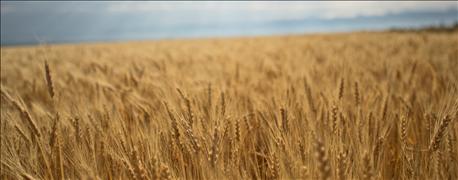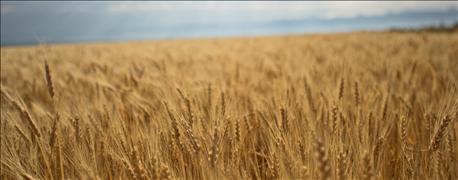November 11, 2016

Cold weather is upon us. This is when I often get the question, “What does an agronomist do this time of year?”
While we may not be out walking fields, we are still hard at work evaluating last year’s management plans and looking ahead to next season. Like every year, 2016 provided its own set of challenges for wheat farmers. Here are some highs and lows of the season, and tips for managing your wheat crop next year.

EVERY YEAR DIFFERENT: 2016’s growing season with surplus precipitation challenged a lot of crop farmers across eastern North Dakota.
Unpredictable weather
Depending on where you are in the state, you may have had a dynamic weather year. In my area of eastern North Dakota, spring started out dry, which hurt wheat emergence in some fields. Late in the season, we got a lot of rain in a few days, requiring farmers to respond quickly to agronomic concerns. Harvest was a challenge this year in some areas where we couldn’t get a string of dry days to get into fields.
Ideal conditions for disease
Late-season rains persisted for several days in much of the state, resulting in near-perfect conditions for disease development. Some farmers struggled with fusarium head blight following the wet weather, since that disease favors warm, humid conditions. Timing fungicide applications was difficult this year because the short flowering window coincided with heavy rains. If you were able to get them made, fungicide applications paid dividends this year.
Yields good, despite challenges
Despite variable weather and agronomic challenges, wheat yields were good in most parts of the state. Nationally, favorable growing conditions led to record wheat yields for both spring and winter varieties.

JASON HANSON
Yield potential begins with seed genetics, but environmental conditions and management practices determine how much of that yield potential is realized at the end of the season. Farmers who scouted fields regularly and responded to agronomic challenges saw the benefit of good management decisions at harvest.
Looking ahead to 2017
Weed management is top of mind for 2017, especially due to the amount of rain we saw late in the season. Plenty of moisture and warm fall temperatures gave winter annual weeds a good start, so they may be more difficult to control in the spring. Weeds like kochia, waterhemp and common ragweed are a problem for farmers every year. Herbicide resistance makes weed management even more difficult, limiting options for control.
Scout fields early and often, and follow up with timely herbicide applications targeted for the weeds you’ve identified. Rotate modes of herbicide action, tank-mix grass and broadleaf herbicides, and always follow herbicide label instructions for effective weed control.
If you saw high disease pressure in 2016, be prepared in 2017. Many disease pathogens overwinter in soil and plant residue, especially in low- or no-till fields. Talk with your agronomist about fungicide applications, and scout fields throughout the season to ensure your wheat crop stays healthy. A timely fungicide application that protects the flag leaf can help ensure the plant produces enough energy for good grain fill.
I like to spend time after harvest reviewing yield results and analyzing management plans with farmers. We look to see if yield expectations were met, and whether changes to seed or input choices are needed. While we can’t predict what challenges next year will bring, we can develop a solid management plan and adjust it as needed as the season progresses.
Hanson is a regional agronomist with WinField United and a guest on "The Deal With Yield" podcast. To contact him, tweet any questions @RocknRollAgrnmy.
You May Also Like




